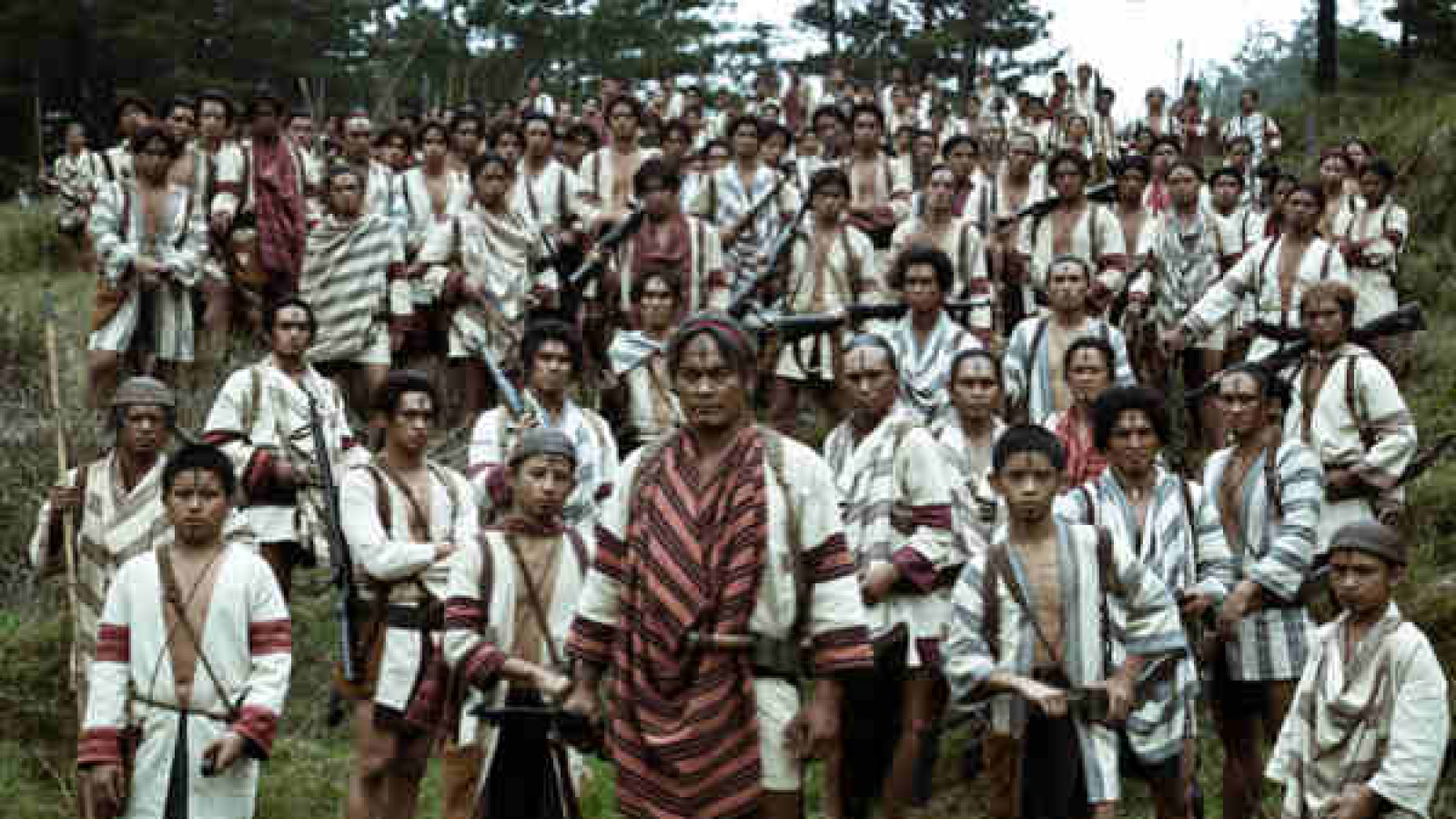By Chlotrudis Independent Film Society
Rating: 3 cats
Director: Te-Sheng Wei
Starring: Chi-Wei Cheng | Da-Ching | Jun'ichi Haruta | Lin Ching-Tai | Masanobu Andô | Umin Boya

Original language title: Sai de ke · ba lai: Tai yang qi
Country: taiwan
Year: 2021
Running time: 154
IMDB: http://www.imdb.com/title/tt2007993/
Jason says: “No matter the cultures involved, movies like WARRIORS OF THE RAINBOW: SEEDIQ BALE follow a certain tragic pattern: Conquest, valiant rebellion, inevitable clampdown. Here, the invaders are the Japanese, the natives are Taiwan’s Seediq people, and the way they fight back involves a lot of decapitations. The mayhem is well-done, but at a certain point the bloodiness of the battle overshadows the rightness of the cause and the complexity of the situation.
“In 1895, the Shimonoseki Treaty placed the island of Taiwan in Japanese hands, and just as young Mouna Rudo (De-Ching) is earning the tattoos that will mark him as a man, the Japanese penetrate to the Wushe are where Mouna’s Mehebu clan makes their home. Some thirty years later, the older Mouna (Lin Ching-tai) is now the clan’s chief, with an admirer in young Pawan Nawi (Lin Yuan-jie). The native people doing backbreaking labor for just enough money to pay for millet wine, although two members of the clan have taken Japanese names to work for the police – Dakis Nomin (Hsu Yi-fan) as Hanaoka Ichiro and Dakis Nawi (Soda Voyu) as Hanaoka Jiro. An incident with a non-native officer, Yoshimura Katsumi (Matsumoto Minoru), and Mouna’s sons Tado & Baso, leads to Mouna contacting the other clans to launch a co-ordinated attack.
“It may be unfair to judge the version of Seediq Bale playing in North American cinemas too harshly; like producer John Woo’s own Red Cliff before it, what was released in Asia as a two-part epic has been cut nearly in half by its local distributor (IMDB lists a total runtime of 276 minutes in Taiwan; the US release runs roughly two and a half hours, with no word yet on how Well Go will release it on home video). It seems likely that very little in the way of action has been cut, so everything else likely takes an even harder hit. As a result, there are a bunch of characters who don’t seem to do much (or seem redundant), storylines that seem to disappear for a long time, and sudden turns that maybe would have been foreshadowed earlier in the longer cut.
“One can only judge what’s actually playing, though, and in this case that’s a somewhat disjointed movie with a vicious streak to its well-done action. The last act piles on on the violent death in a way that fits with what the audience learns about the Seediq culture over the course of the film, but which does a number on both the ability to enjoy the action and audience sympathy (cultural differences figure as well, since it’s pretty clear that rainbows mean much different things for the Seediq than they do to western audiences). It’s an oddly prideful version of this story, but that in many ways fits with what we see from the start – a simplicity to the style that almost marks it as being for a younger audience, but which may actually convey a cultural hubris that prevents the Seediq as a group from either adapting or assimilating (the very name means ‘true humans’), and makes it hard to cast them as the heroes of the piece.
“That doesn’t mean that they’re not interesting. Lin Ching-tai, like many in the cast, is doing his first work as an actor – he’s an
aboriginal village chairman, pastor, and activist in real life. If he’s been cast as the closest thing filmmaker Wei Te-sheng can find to a modern-day Mouna Rudo, it’s effective; he’s got the right combination of wear and hidden power, and while action and speech-making maybe suit him better than dialog, he’s good enough at all three to make a powerful impression. Indeed, none of the actors apparently making their screen debut in Seediq Bale seem less than professional; Hsu Yi-fan and Soda Voyu present their conflicted loyalties nicely and Lin Yuan-jie does especially well for one so young. This shortened cut, at least, doesn’t give the audience much chance to see what the women in the cast are capable of and also gives short shrift to the Japanese actors, some of whom, like Masanobu Ando, likely weren’t hired for glorified cameos. Sabu Kawahara, at least, gets to throw himself into his role as the general who can’t believe that these savages are doing so much damage.
“And plenty of damage gets done – the action is bloody and plentiful, with some obvious early CGI (mostly used when the Seediq are hunting animals) eventually giving way, for the most part, to practical, well-choreographed mayhem, which may be a little much for tender constitutions but is nevertheless executed quite nicely. The final battle is especially impressive, as it’s sustained for a very long time but exceptionally clear no matter which scale it’s running at, whether a huge firefight or machetes and katanas close in.
“If only there weren’t certain other things happening at the same time that are ultimately self-destructive both for the Seediq and the movie. Maybe, in the full-length version, there’s a more visible logic and nobility, but this cut is the one we have right now, and while it offers glimpses of a story with the sort of epic scale and complexity to match its action, it may ultimately feel like too much. It’s impressive, but not all it strives to be. 3 cats
“Seen 19 May 2012 in AMC Boston Common #12 (first-run, Sony Digital 4K)”
